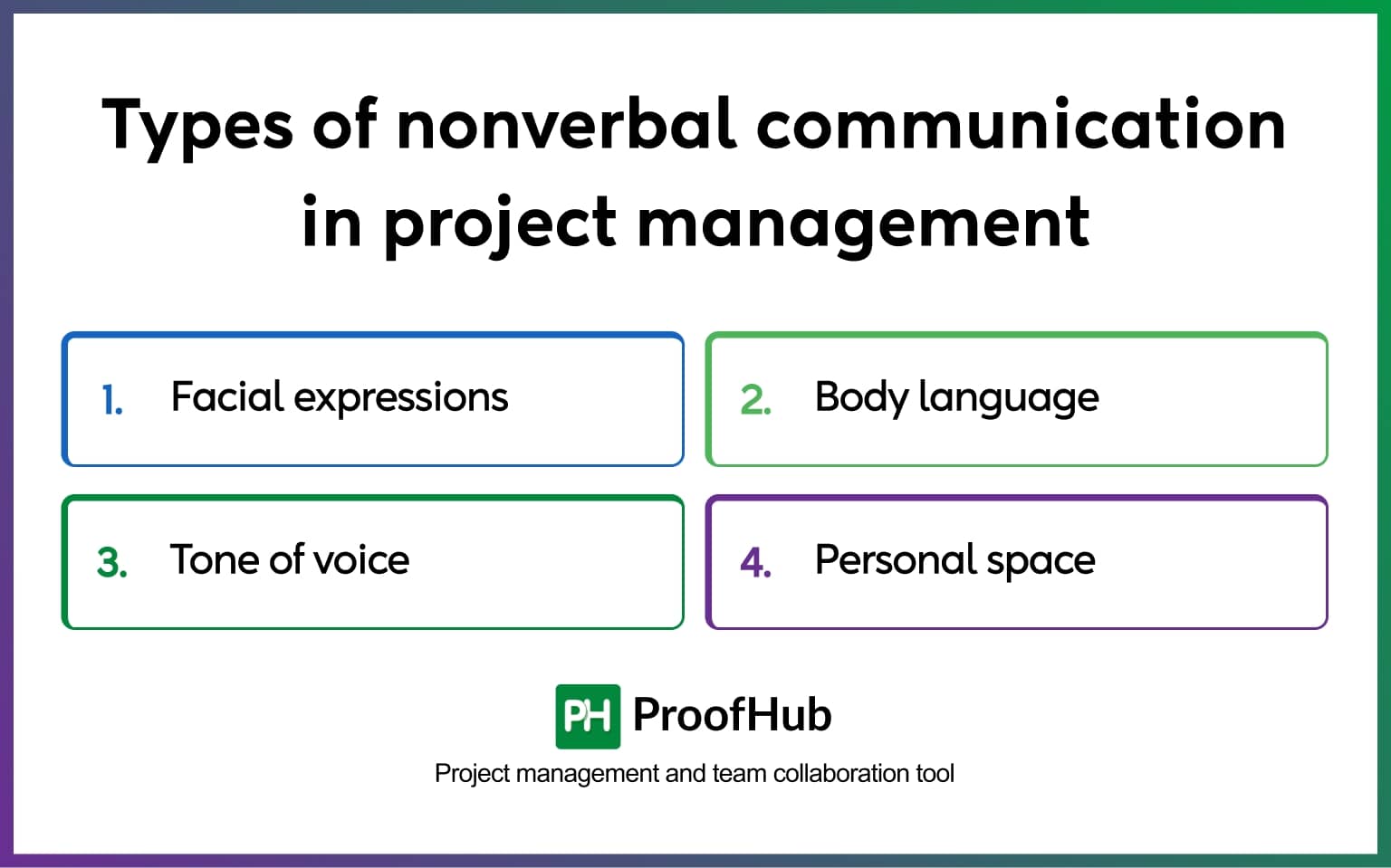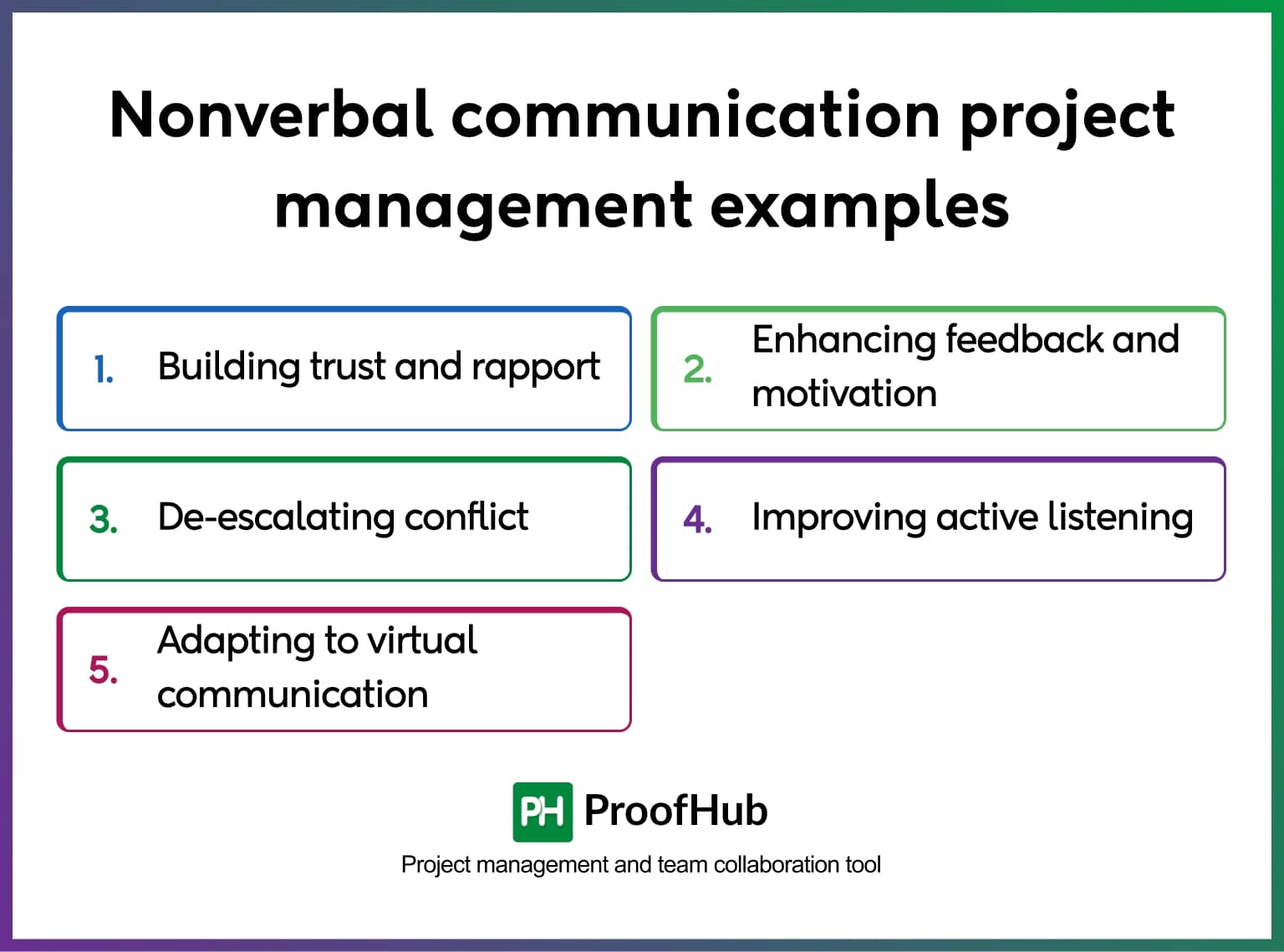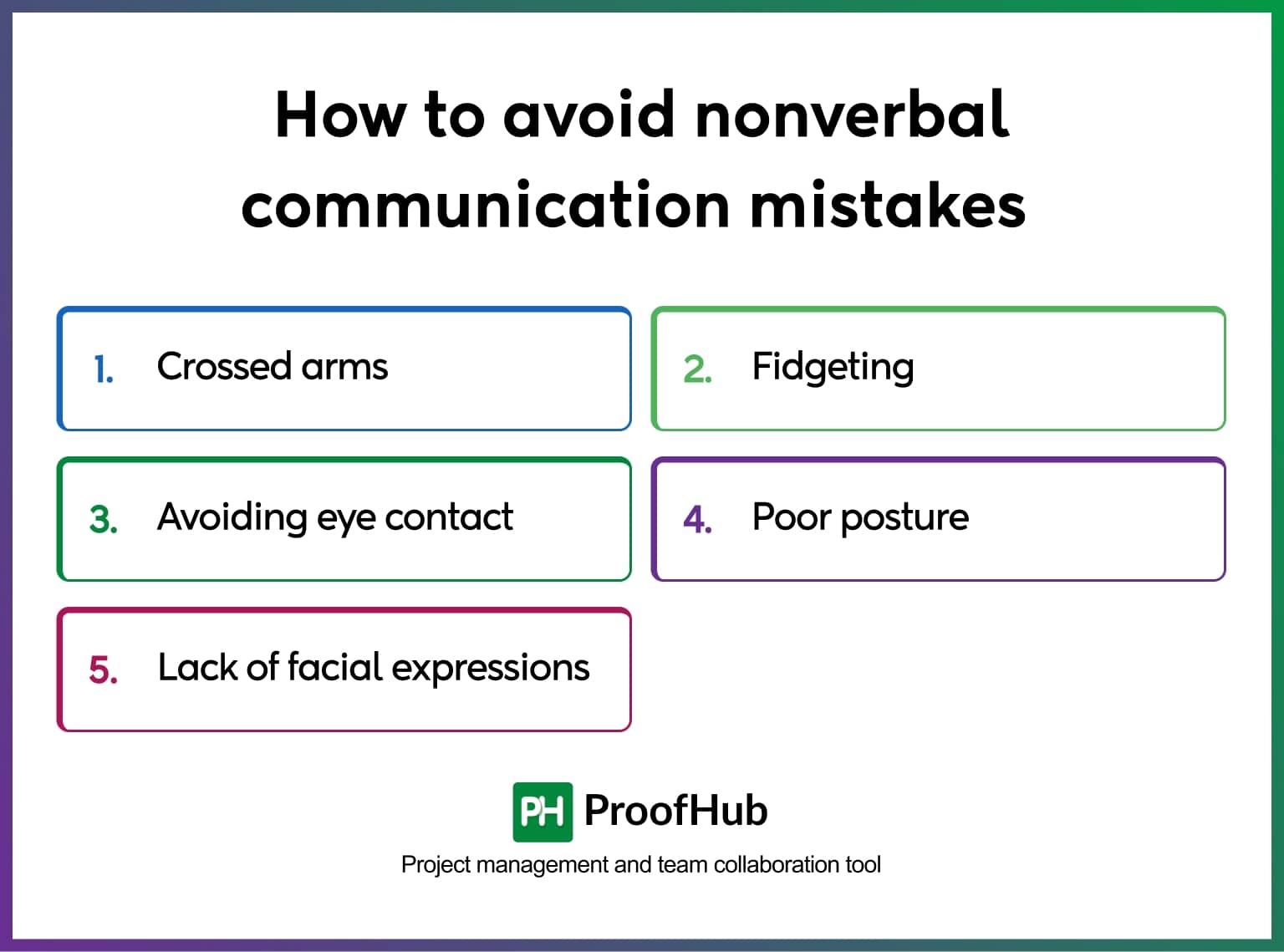Introduction
As a project manager, you know that effective communication is the backbone of a successful project.
But what if I tell you that words aren’t everything?
Yes, you read it right! Nonverbal cues are equally important.
As the saying goes, it’s not just about what you say, but how you say it, how you read others, and how you present yourself.
Over my decade-long career as a manager, I have learned that incorporating nonverbal communication in project management acts as a bridge that helps you understand your team members better and manage your project more effectively.
Let’s understand how nonverbal communication works in project management and how you can take it’s advantage.
What is the importance of nonverbal communication in project management?
Nonverbal communication plays a crucial role in project management. It helps to convey messages and emotions beyond words. Understanding nonverbal cues can improve collaboration in a team, enhance trust, and ensure that everyone is on the same page.
Dr. Mehrabian came up with this formula to explain how our minds understand what we communicate. His research found that only 7% of a message’s meaning is conveyed through words. 38% comes from vocal cues such as tone and pitch, and 55% from nonverbal cues like gestures and facial expressions. This means that a whopping 93% of communication is nonverbal.
“Imagine your co-worker storms into her office after lunch. She’s red-faced, tight-lipped, and speaks to no one. She throws her briefcase on the desk, plops down in her chair, and glares out the window. You ask, ‘Are you all right?’ She snaps back in an angry tone, ‘I’m fine!’ Which message do you believe: Her nonverbal signals (behavior and voice tone), or her verbal one (words alone)? Most likely, you believe the nonverbal message,” says Darlene Price, author of Well Said! Presentations and Conversations That Get Results.
Price said when messages are mismatched, most recipients tend to believe nonverbal messages more than spoken words.
That’s why it’s important to pay attention to nonverbal cues and mannerisms. It will help you develop good communication skills.
Whether you’re chatting with colleagues about a new project, negotiating with partners, or presenting ideas to clients, tuning into these cues helps you navigate conversations smoothly.
Read more-Mastering nonverbal communication: types, examples, and skills
What are advantages of nonverbal communication in project management?
Here are some advantages of nonverbal communication in project management:
- Builds trust: Positive body language, such as eye contact and open gestures, creates trust among team members and makes collaboration smoother.
- Enhances clarity and understanding: Facial expressions, tone of voice, and gestures help to clarify verbal messages and reduce misunderstandings in project discussions.
- Speeds up decision-making: Firm handshakes or confident posture can signal an agreement and speed up any decision related to projects.
- Boosts team morale: Encouraging gestures like a thumbs-up can motivate team members and create a supportive work environment.
- Improves conflict resolution: Being aware of nonverbal cues helps project managers detect tension in team members and address issues before they arise.
- Increases engagement: Expressive body language and active listening signals keep team members engaged in meetings and discussions, and improve participation.
Types of nonverbal communication in project management
Non-verbal communication in project teams is all about expressing yourself without using words.
Various types of nonverbal communication are used to convey a message effectively. Here are some types you can consider:

1. Facial expressions
When we talk about facial expressions, we mean the emotions that your face shows, like when you smile or frown.
As a project manager, it’s important to pay attention to these expressions and read people’s emotions. This can help you understand how your team members feel about a project.
Plus, you can build good relationships with your team members. It’s also helpful to know if they are interested or engaged in what you’re discussing.
2. Body language
Body language includes how you hold yourself (posture), the movements you make with your body (gestures), and how you look at others (eye contact).
In project management, good posture and opening gestures show confidence and openness. And, if you maintain eye contact, it shows attentiveness and respect.
There are mainly 4 types of body language:
- Light and bouncy movement: This is the body language of someone energetic, approachable, and playful. They use open gestures and expressive facial movements that make them friendly and engaging.
- Soft and fluid movement: These movements are smooth, gentle, and flowing, used by people who are calm, empathetic, and adaptable. Their gestures are relaxed. They maintain steady eye contact, making others feel comfortable and understood.
- Dynamic and determined movement: This type of body language is strong, purposeful, and full of momentum. People with this movement style use bold gestures and lean in when speaking. They have a firm stance, exuding confidence and drive.
- Precise and bold movement: People with this body language use sharp gestures, maintain an upright posture, and make direct eye contact. They are decisive and detail-oriented.
3. Tone of voice
The tone of voice is all about how you speak, including the way you change your voice’s pitch, speed, and volume.
Your tone can affect how people perceive you and how engaged they are in what you’re saying. In project management, using a variety of tones can keep people interested and motivated.
4. Personal space
When communicating, it’s important to be aware of personal space – how close you stand or sit to others. However, personal space preferences differ depending on culture. Different cultures have distinct choices when it comes to physical distance.
Generally, North Americans prefer to maintain at least 18 inches of personal space. Anything closer is considered as too intimate. On the other hand, a co-worker from South America may feel comfortable getting closer to talk.
Use of nonverbal communication in project management
In project management, nonverbal communication plays an important role in conveying messages effectively. Here are some ways you can use nonverbal communication in project management:

1. Bridge the gap
Sometimes, words alone are not enough to convey a message. They may not be able to capture the nuances and complexities of what someone intends to say. That’s where nonverbal cues come in handy.
Nonverbal gestures complement and reinforce the verbal message. Due to this, the receiver understands the intended meaning quickly.
Nonverbal cues can help bridge the gap between what you say and what you mean. It provides additional context and emotional information that clarifies the conveyed message.
2. Master the art of alignment
Nonverbal cues can help you align your message with your intended meaning. They can help you express your emotions more clearly and effectively.
If your body language and tone of voice do not align with your message, it can create confusion. It becomes hard for others to understand what you are trying to say.
3. Become adaptable
Different situations, cultures, and personalities need different nonverbal communication styles. For example, some cultures feel that looking directly into someone’s eyes is impolite.
Therefore, you need to keep this in mind and adjust your nonverbal communication style based on the culture or situation you are in.
4. Sharpen your listening skills
Nonverbal cues can also help you understand team members better. By paying attention to their body language and tone of voice, you can better understand what they are trying to say.
For example, if someone is slouching or speaking in a monotone voice, it may indicate that they are feeling bored or disengaged. You can adjust your communication style by paying attention to these social cues to keep them engaged.
Examples of nonverbal communication in project management
Here are some examples to help you understand how effective nonverbal communication can benefit project management:

1. Building trust and rapport
When you’re in a meeting, it’s important to make eye contact with everyone on the team. You should smile genuinely and use open gestures like outstretched hands. These nonverbal cues can help you convey confidence and approachability. This will encourage effective team communication.
As a result, your team members will feel heard and valued. This will foster trust and collaboration among the team.
Read more- What is effective communication? [with benefits and tips]
2. Enhancing feedback and motivation
When someone on your team leads a successful presentation, it’s important to show appreciation. You can do this by giving them a thumbs-up and a smile. This simple gesture will let them know they did a good job and motivate them to do even better in the future.
When team members feel recognized for their hard work, it boosts morale. This will encourage everyone to contribute more meaningfully.
3. De-escalating conflict
Conflicts are bound to occur in any project, but how you deal with them can make a big difference. If you find yourself in a heated discussion, try to use calming hand gestures, lower your voice, and lean slightly forward.
Doing this can show the other person that you’re willing to listen and work towards a solution. This can help to de-escalate the situation and lead to constructive dialogue and conflict resolution. By handling these conflicts appropriately, you can improve the outcome of the project.
4. Improving active listening
During a one-on-one meeting with a team member, it’s important to show that you’re listening to their concerns. You can do this by leaning slightly in, maintaining eye contact, and nodding occasionally. This shows empathy and encourages effective project communication.
When you show you care about their issues, it helps them feel supported, and they’re more likely to trust you. This can result in increased engagement from your team members and boost internal communication at your workplace.
5. Adapting to virtual communication
When you’re leading a virtual meeting, it’s important to communicate clearly and use simple language. You should sit up straight and look at the camera so everyone can see you. Encourage your virtual team members to participate by hand-raising. This will help everyone feel included and engaged.
By using these nonverbal communication strategies, you can communicate with your team effectively and improve productivity, even in a virtual setting. This can help you make progress on your projects and keep everyone satisfied with the team’s work.
Read more- 5 tips to hone your nonverbal communication skills during remote work.
How to avoid nonverbal communication mistakes
As a project manager, you should understand that internal communication is important in project management. So, you should avoid nonverbal gestures that can be misinterpreted and lead to project challenges.
Here are some common mistakes project managers make and how you can avoid them:

1. Crossed arms
If you cross your arms while having a conversation with someone, it may convey negative feelings or opinions to the other person.
Suppose you organized a team meeting before starting a new project. Your team members are giving presentations on their ideas for the project in the meeting. But you are crossing your arms; they may think you are uninterested or disagree with what they say.
Pro tip: Practice being mindful of your body language during discussions. Try to make a conscious effort to keep your arms relaxed and open.
2. Fidgeting
According to Jim Blythe in Consumer Behaviour, fidgeting is a behavior that serves as an external outlet for what one is feeling internally.
Fidgeting has different interpretations. Some people may perceive it as a sign of nervousness or boredom, while others may view it as a lack of interest or disrespect.
Fidgeting can be distracting to others, especially in professional or social settings.
Pro tip: To stop fidgeting, take deep breaths and focus on being present in the moment. This will help you shift your attention from the urge to fidget to the task at hand. Additionally, it will reduce your anxiety or restlessness.
3. Avoiding eye contact
Eye contact is one of the most important aspects of communication. Avoiding eye contact can signal a lack of confidence, dishonesty, or disinterest. It can also make others feel uncomfortable or undervalued.
Pro tip: Practice maintaining eye contact while speaking or listening. It will help you build trust and rapport with your team.
4. Poor posture
Poor posture can negatively impact your professional life in several ways. It indicates a lack of confidence, disinterest, or disrespect. It can also lead to physical discomfort and lead to distraction.
Pro tip: Practice good posture by sitting up straight and maintaining a neutral spine. Good posture during important meetings will help you project confidence and respect.
5. Lack of facial expressions
A lack of facial expressions can make it difficult for others to read your emotions or interpret your message. It can also make you appear unapproachable or uninterested.
Pro tip: Practice varying your facial expressions to match the tone of the conversation. You can start by being aware of your facial expressions. Then, you can try to adjust them.
Conclusion
Effective nonverbal communication can help project managers understand their team members better and manage projects more efficiently. Therefore, it’s important to master nonverbal communication in project management. It will transform the way you manage your projects.
Additionally, you can use a digital tool like ProofHub to improve your project communication. ProofHub is a powerful project management and team collaboration software. It lets you streamline your workflow, collaborate better, and finish projects on time. ProofHub also includes features like built-in chat, time tracking, task management, and group chats that can assist you in achieving your project goals.
Don’t let poor communication hold your team back! Invest in thebest team communication tool for your business.
FAQs
What are the common challenges in interpreting nonverbal signals in project management?
Some common challenges include cultural differences, individual differences, and situational context. A gesture can have different meanings in different cultures. Something in one culture may mean something completely different in another culture.
Also, a person’s gestures might be unique to them. It will be difficult for others to interpret them accurately. Lastly, the location or timing of the interaction can also impact the interpretation of nonverbal cues.
Are there specific nonverbal cues that indicate team collaboration and synergy?
Various nonverbal cues indicate team collaboration and synergy. Some are positive facial expressions, open body language, and engaged eye contact.
How does a project manager convey authority and confidence through nonverbal communication?
As a project manager, you can show authority and confidence by maintaining eye contact, standing tall, and having a good posture. You can also use hand gestures to emphasize important points. Use facial expressions to show you are engaged and interested in what others say.
In what ways does nonverbal communication contribute to effective project decision-making?
Nonverbal communication can be a powerful tool in making effective project decisions. Nonverbal gestures can help you build trust with your team and stakeholders. It will make it easier to share your ideas and goals.
Paying attention to the nonverbal cues of others can help you understand their emotions and reactions. So you can adjust your approach accordingly.

